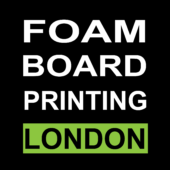Foam board is a versatile and lightweight material widely used in crafting, model building, and display projects. Whether you’re creating a poster, a model, or a display board, knowing how to effectively glue foam board together can enhance the quality of your work. This article will guide you through the process, materials needed, and some tips for achieving the best results.
Materials Needed
- Foam Board: Choose the thickness and size that best suits your project. Common thicknesses range from 3/16 inch to 1/2 inch.
- Adhesives:
- Foam-safe glue: Look for adhesives specifically designed for foam materials, such as foam board adhesive or rubber cement.
- Spray adhesive: This can provide a strong bond and is easy to apply over large areas.
- Hot glue: Suitable for quick projects, but use sparingly as it can create lumps and may melt the foam if too hot.
- Cutting Tools: A sharp utility knife or a hot wire cutter for precise edges.
- Straight Edge or Ruler: To guide your cuts.
- Cutting Mat: Protects your work surface and provides a stable cutting area.
- Weights or clamps: To hold the pieces together while the glue dries.
Steps to Glue Foam Board Together
- Prepare the Surfaces:
Ensure that the surfaces to be glued are clean and dry. Remove any dust or debris to promote better adhesion. If necessary, lightly sand the edges of the foam board to create a rougher surface, which can help the adhesive bond better. - Choose Your Adhesive:
Depending on your project and the time you have available, select the appropriate adhesive. Foam-safe glue is often the best choice, as it is specifically designed not to dissolve or damage foam materials. - Apply the Adhesive:
For liquid glues, apply a thin, even layer to one of the foam surfaces. If using spray adhesive, follow the manufacturer’s instructions for distance and application technique. Be sure to cover the entire area that will be joined. - Join the Pieces:
Carefully align the foam pieces together. Take your time to ensure they are positioned correctly, as some adhesives bond quickly and can be difficult to adjust once set. - Apply Pressure:
Use weights or clamps to hold the pieces firmly together. This pressure ensures a strong bond and prevents gaps from forming. If using clamps, be cautious not to apply too much pressure, which could distort the foam. - Allow to Dry:
Follow the adhesive’s instructions for drying time. It’s crucial to let the adhesive cure fully before handling the foam board, as this will ensure the strongest bond. - Trim Excess Material:
Once the adhesive is dry, you can use a sharp utility knife to trim any excess foam or uneven edges for a cleaner finish.
Tips for Best Results
- Test the Adhesive: If you’re unsure about how a particular adhesive will react with your foam board, conduct a small test on a scrap piece first.
- Work in a Well-Ventilated Area: Some adhesives, especially spray types, can release fumes. Ensure good ventilation for your safety.
- Avoid Excessive Heat: When using hot glue, ensure the glue is not too hot to prevent melting or warping the foam.
Conclusion
Gluing foam board together is a straightforward process that can significantly enhance the quality of your projects. By selecting the right adhesive and following proper techniques, you can create sturdy and visually appealing displays, models, or craft items. With practice and patience, you’ll master the art of working with foam board, opening up endless possibilities for your creative endeavors. Whether for school projects, art displays, or professional presentations, mastering this skill will serve you well in various applications.
